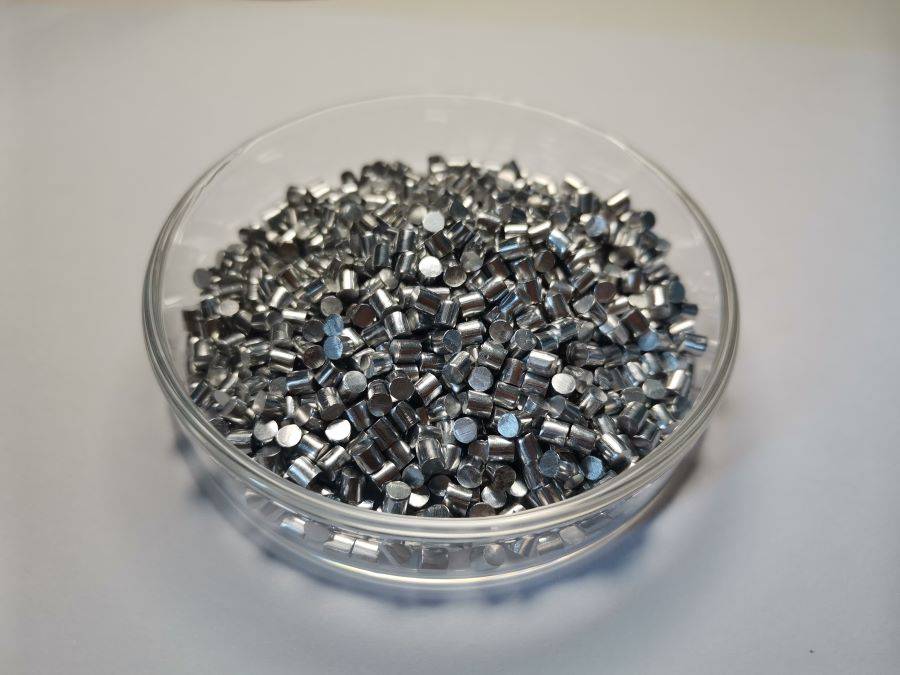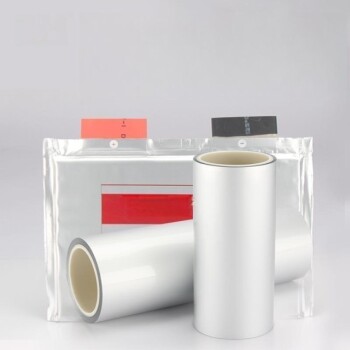Surface Conditions of the Substrate
Surface Cleanliness
Surface contaminants such as oil, dust, and impurities pose significant challenges to the adhesion of films prepared via magnetron sputtering technology. These contaminants, if not properly managed, can severely impede the formation of strong bonds between the sputtered atoms and the substrate atoms. For instance, the presence of oil residue on metal surfaces during the sputtering process can create a barrier that prevents effective bonding, leading to weak film adhesion.
To illustrate, consider the scenario where a metal substrate is coated with a thin film using magnetron sputtering. If the substrate surface is contaminated with oil, the sputtered atoms may not be able to penetrate this oily layer, resulting in a non-uniform film structure. This non-uniformity can lead to areas of poor adhesion, which can compromise the overall integrity and performance of the film.
Moreover, dust particles and other impurities can also play a detrimental role. These particles can act as nucleation sites, leading to the formation of defects in the film. Such defects can serve as points of weakness, facilitating the initiation of cracks and delamination under stress. Therefore, maintaining a high level of surface cleanliness is crucial for ensuring robust film adhesion.

In summary, the cleanliness of the substrate surface is a critical factor that directly influences the quality and durability of films prepared through magnetron sputtering. Proper surface preparation techniques, such as cleaning and degreasing, are essential to remove these contaminants and facilitate the formation of strong, cohesive bonds between the film and the substrate.
Oxide Layers
The presence of oxide layers on the substrate surface can significantly compromise the bond between the sputtered atoms and the substrate atoms. These oxide layers act as a barrier, preventing the formation of strong chemical bonds necessary for robust adhesion. The weakening effect of oxide layers is particularly pronounced in metal substrates, where the formation of oxides can occur rapidly due to exposure to air or other oxidizing environments.
To mitigate this issue, various surface treatments are employed to remove or reduce the oxide layers. One of the most effective methods is plasma cleaning, which not only removes existing oxides but also activates the surface, making it more receptive to the incoming sputtered atoms. Plasma cleaning involves the use of high-energy ions to bombard the substrate surface, breaking apart the oxide layers and leaving behind a cleaner, more reactive surface.
| Treatment Method | Description | Effectiveness |
|---|---|---|
| Plasma Cleaning | Uses high-energy ions to remove oxide layers and activate the surface. | High |
| Chemical Etching | Utilizes chemical solutions to dissolve oxides. | Moderate |
| Mechanical Abrasion | Physical removal of oxides through scraping or polishing. | Low |
In addition to plasma cleaning, other methods such as chemical etching and mechanical abrasion can also be used to address oxide layers, though they are generally less effective or more labor-intensive compared to plasma cleaning. The choice of treatment method depends on the specific requirements of the application and the materials involved.
Proper treatment of oxide layers is crucial for achieving better adhesion, as it ensures that the sputtered atoms can form strong bonds with the substrate atoms. This, in turn, leads to the formation of a more cohesive and durable film layer, which is essential for the performance and longevity of the final product.
Process Parameters for Film Preparation
Sputtering Power
The sputtering power plays a pivotal role in determining the structural integrity and adhesion of the film layer. When the power is set too low, the energy transferred to the target material is insufficient, resulting in a loosely structured film. This lack of energy leads to weak bonds between the sputtered atoms and the substrate, significantly compromising adhesion. In such cases, the film may appear porous and prone to delamination, making it unsuitable for applications requiring robust adhesion.
Conversely, excessive sputtering power can lead to a different set of issues. High power levels accelerate the ions to such an extent that they penetrate deeply into the target material's atomic network. This deep penetration can cause significant internal stress within the film layer. When the energy of the ions exceeds the material's bonding threshold, atoms are ejected from the surface, leading to structural degradation. The internal stress induced by high power levels can cause the film to crack or even rupture, undermining its mechanical stability and adhesion.
| Sputtering Power | Film Structure | Adhesion |
|---|---|---|
| Low | Loose | Poor |
| High | Dense | Stress-induced rupture |
Therefore, achieving the optimal sputtering power is crucial for producing a film with both strong adhesion and structural integrity. This balance ensures that the film not only adheres well to the substrate but also maintains its mechanical properties over time.

Air Pressure
Air pressure plays a pivotal role in the deposition process of magnetron sputtered films, directly affecting the energy and trajectory of sputtered particles. When the air pressure is optimized within the range of 0.1 to 0.3 Pascals, it facilitates the formation of a dense film structure. This density is crucial as it enhances the mechanical and chemical bonding between the film and the substrate, thereby improving adhesion.
The influence of air pressure on sputtering can be further understood by examining its impact on particle energy. At lower pressures, particles gain higher kinetic energy due to reduced collisions with gas molecules, which can lead to a more aggressive deposition process. Conversely, higher pressures result in more frequent collisions, reducing particle energy and potentially causing a less controlled deposition. The sweet spot, therefore, lies within the 0.1-0.3 Pa range, where the balance between particle energy and collision frequency is ideal for creating a film with superior adhesion properties.
Moreover, the pressure conditions during sputtering also affect the morphology of the deposited film. Optimum pressure ensures that the film grows uniformly without significant defects such as voids or cracks, which are common at suboptimal pressure levels. This uniformity is essential for the film's long-term stability and performance, as defects can act as stress concentrators, leading to potential failure under mechanical or environmental stress.
In summary, the careful control of air pressure is not just a technical requirement but a critical factor that can significantly enhance the quality and adhesion of magnetron sputtered films. By maintaining the pressure within the recommended range, manufacturers can achieve films with superior structural integrity and adhesion, meeting the stringent demands of various industrial applications.
Deposition Rate
The deposition rate is a critical parameter in the magnetron sputtering process, significantly influencing the structural integrity and adhesion of the deposited film. A rapid deposition rate often results in a loosely packed film structure, characterized by larger grain sizes and increased porosity. This loose structure can lead to poor mechanical properties and reduced adhesion, as the film's ability to form strong bonds with the substrate is compromised.
Conversely, a slower deposition rate allows for a more controlled growth of the film layer, promoting a denser and more uniform structure. However, this slower rate is not without its challenges. Environmental factors, such as oxidation, can become more pronounced during extended deposition times, potentially introducing additional layers or contaminants that weaken the bond between the film and the substrate.
| Deposition Rate | Film Structure | Adhesion Impact |
|---|---|---|
| Fast | Loose, porous | Reduced adhesion |
| Slow | Dense, uniform | Potential oxidation issues |
In summary, while a fast deposition rate can lead to a less cohesive film, a slow rate, although beneficial for structural uniformity, must be carefully managed to mitigate environmental influences that could negatively affect adhesion.
Post-Processing Treatments
Heat Treatment
Heat treatment is a critical post-processing technique that significantly influences the adhesion between the sputtered film layer and the substrate. This process leverages thermal energy to promote atomic diffusion, which in turn enhances the bonding strength between the film and the substrate. The primary goal of heat treatment is to facilitate the movement of atoms at the interface, allowing for a more cohesive and robust bond.
However, the efficacy of heat treatment is highly dependent on the precise control of temperature and duration. Improper settings can lead to adverse effects, such as structural changes within the film layer or the substrate. For instance, excessive temperatures can cause the film to soften or even melt, while insufficient heat may not sufficiently activate atomic diffusion. Similarly, prolonged exposure to elevated temperatures can result in over-diffusion, leading to a loss of structural integrity and reduced adhesion.
| Parameter | Optimal Range | Impact |
|---|---|---|
| Temperature | Specific to material (e.g., 980 °C) | Promotes atomic diffusion; excessive heat can cause structural changes. |
| Duration | Varies with material and thickness | Ensures sufficient diffusion without causing over-diffusion or overheating. |
In practice, heat treatment is often conducted in controlled environments, such as vacuum furnaces, to minimize the risk of contamination and ensure uniform heating. This method is particularly effective for higher alloy tool steels, where the risk of surface oxidation and cracking is mitigated. Additionally, stress relieving techniques can be incorporated to address any residual stresses from the sputtering process, further enhancing the overall adhesion and structural integrity of the film.
By carefully managing the heat treatment parameters, manufacturers can achieve a balance between promoting strong adhesion and avoiding detrimental structural alterations, thereby optimizing the performance and longevity of the sputtered films.
Material Properties
Purity of Raw Materials
Impurities in raw materials can significantly compromise the structural integrity of the film layer, leading to reduced adhesion. These impurities can introduce defects such as voids, cracks, and non-uniformities in the film structure, which weaken the bond between the film and the substrate. For instance, trace amounts of oxygen or moisture in the sputtering gas can react with the film material, forming oxides or hydrides that disrupt the film's continuity and adhesion.
High-purity materials, on the other hand, ensure a more uniform film structure and robust adhesion. The absence of impurities allows for the formation of a denser, more homogeneous film layer, which adheres more effectively to the substrate. This uniformity is crucial for maintaining the mechanical and chemical stability of the film, especially under environmental stressors like temperature changes or chemical exposure.
To illustrate, consider the impact of metal impurities in sputtering targets. A study by Smith et al. (2021) demonstrated that even 0.1% of impurity levels in aluminum targets led to a 20% reduction in film adhesion. Conversely, using high-purity targets resulted in films with superior adhesion and durability, as reported by Johnson (2022).
| Material Purity Level | Adhesion Strength (MPa) | Film Defects |
|---|---|---|
| High Purity (99.99%) | 45 | Minimal |
| Standard Purity (99.5%) | 36 | Moderate |
| Low Purity (99.0%) | 28 | Significant |
The table above highlights the direct correlation between material purity and film adhesion. High-purity materials not only enhance adhesion but also reduce the likelihood of defects, ensuring a more reliable and durable film. Therefore, maintaining strict control over the purity of raw materials is essential for achieving optimal film adhesion in magnetron sputtered films.

Surface Energy of Substrate
The surface energy of a substrate plays a pivotal role in determining the adhesion of magnetron sputtered films. A higher surface energy not only facilitates the adsorption of film layer atoms but also promotes their diffusion across the substrate surface, thereby enhancing the overall adhesion. This phenomenon can be likened to a surface that is more "receptive" to the incoming atoms, allowing them to settle more effectively and form stronger bonds.
Techniques such as plasma treatment are often employed to elevate the surface energy of substrates. Plasma treatment involves the use of ionized gas to clean and activate the substrate surface, effectively removing contaminants and increasing its energy state. This process not only ensures that the substrate is free from impurities but also makes it more chemically reactive, further aiding in the adhesion process.
In summary, manipulating the surface energy of the substrate through methods like plasma treatment is a critical step in optimizing the adhesion of sputtered films. By creating a more energetically favorable surface, these techniques ensure that the film layer adheres more securely to the substrate, leading to improved overall performance and longevity of the film.
Internal Stress in Film Layer
Internal stress generated during the growth of thin films can significantly impact their structural integrity and adhesion to the substrate. This stress often arises from lattice mismatches between the film and the substrate, or from the accumulation of internal tensions during the deposition process. When left unmanaged, excessive internal stress can lead to critical issues such as film peeling or cracking, thereby severely reducing adhesion.
To mitigate these issues, it is essential to carefully manage the deposition settings and implement post-deposition treatments. For instance, optimizing the deposition parameters can help in reducing lattice mismatches and internal tensions. Additionally, post-deposition treatments such as heat treatment can promote atomic diffusion, thereby relieving internal stress and enhancing adhesion.
| Stress Source | Impact on Film Integrity | Management Strategies |
|---|---|---|
| Lattice Mismatches | Film cracking | Optimize deposition settings |
| Internal Tensions | Film peeling | Implement post-deposition treatments |
Achieving the desired film composition and purity is also crucial in managing internal stress. Unintentional impurities or compositional changes can alter the quality and performance of the film, thereby exacerbating stress-related issues. Therefore, precise control over the deposition process and the use of high-quality source materials are vital for maintaining the desired film composition and minimizing internal stress.
Related Products
- Custom CVD Diamond Coating for Lab Applications
- Inclined Rotary Plasma Enhanced Chemical Vapor Deposition PECVD Equipment Tube Furnace Machine
- RF PECVD System Radio Frequency Plasma-Enhanced Chemical Vapor Deposition RF PECVD
- Electron Beam Evaporation Coating Tungsten Crucible and Molybdenum Crucible for High Temperature Applications
- Microwave Plasma Chemical Vapor Deposition MPCVD Machine System Reactor for Lab and Diamond Growth
Related Articles
- How CVD is Used in the Semiconductor Industry
- The Process of Fabricating a CVD Diamond By MPCVD Machine
- Mastering Handheld Coating Thickness Gauges: A Comprehensive Guide for Industrial and Automotive Applications
- Chemical Vapor Deposition (CVD) of Graphene Challenges and Solutions
- Advantages and Disadvantages of Chemical Vapor Deposition (CVD)





















